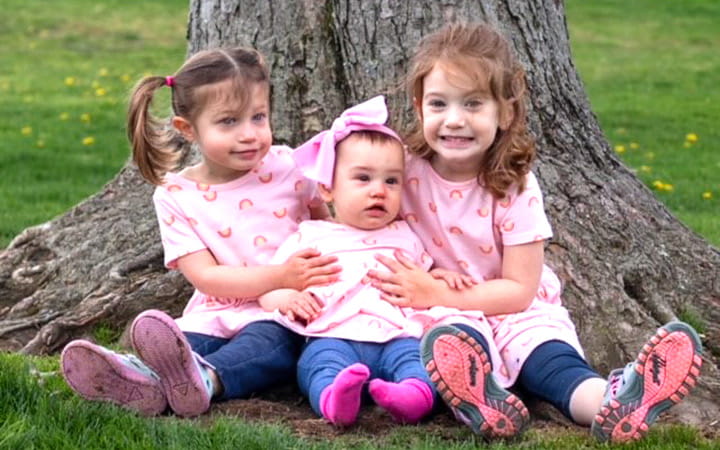Pregnancy Reveals Serious Vascular Condition for Mother
May 26, 2021

Sarah always knew she wanted to be a mother. In 2017, when she was pregnant with her first child, she began having excruciating shooting pain down her left leg. She broke down into tears at work when it took her 15 minutes to walk down one hallway.
At 39 weeks pregnant, she sought treatment at the hospital for her pain. She had elevated blood pressure. It was presumed she had preeclampsia, but there were no other signs of that condition. So she was sent home and told to monitor her symptoms. Soon after, she looked down at her leg and it was swollen, purple and hurtful to touch. She went to the emergency department where it was discovered she had a deep vein thrombosis (DVT). DVT is a blood clot in the deep veins and can be life-threatening.
“When Sarah presented to the hospital at 39 weeks pregnant with this large DVT, she was automatically deemed a high-risk pregnancy. Without the right medicines and oversight, she faced potential major complications such as life-threatening bleeding or clots to the lung,” says Karem Harth, MD, a vascular surgeon with UH Harrington Heart & Vascular Institute.
Just days from her due date with her very first child, Sarah underwent a procedure at UH Cleveland Medical Center to address the DVT and safely deliver her child. Her doctors placed an IVC filter, which is a small device inserted into the inferior vena cava to prevent blood clots from moving through the blood into the lungs and other parts of the body. Physicians monitored the baby while she was in surgery. A day later, Sarah was induced, only to then need an emergency C-section. Since her doctors were aware of her condition, they could monitor her blood clot accordingly during the birth.
“Diagnosing Sarah’s DVT prior to delivery was critical in successfully managing her health by avoiding a potentially devastating clot from traveling to her lungs,” Dr. Harth says. “Additionally, starting her on blood thinners helped to prevent further clot spread in her leg which could have led to limb threatening swelling, known as phlegmasia.”
Sarah’s baby girl, Leora (which means “my light” in Hebrew), was born healthy.
“Sarah had a successful birth and was kept safe thanks to an amazing team of doctors and nurses managing her care,” Dr. Harth says.
Two weeks post-partum, Sarah’s leg swelling persisted despite being placed on blood thinners. The pain and immobility created an extra challenge on top of caring for a newborn. She needed another procedure which included a thrombectomy, angioplasty and stenting to clear the clot and open her veins. Using intravascular ultrasound during the procedure, she was diagnosed with May-Thurner syndrome as the cause of her DVT.
This is a rarely diagnosed condition in which patients develop iliofemoral deep venous thrombosis (DVT) due to an anatomical variant in which the right common iliac artery overlies and compresses the left common iliac vein against the lumbar spine. Thrombectomy helps clear the clot, while stenting opens up the compressed iliac vein, allowing for venous flow to empty out of the leg and resolve symptoms.
“My daughter saved my life,” Sarah says. “If I wouldn’t have gotten pregnant when I did, who knows what would have happened with that blood clot. Maybe it would have traveled to another part of my body. Maybe I would have died.”
Going forward, doctors warned Sarah about the health issues that could surround future pregnancies. If she decided to pursue having more children, every pregnancy would need closely monitored and she would be considered high risk.
“I was willing to take the risk to have my babies,” Sarah says.
Sarah has gone on to have two more successful pregnancies, all monitored by the same team of doctors at UH. Today she’s the mother to three beautiful daughters.
UH had always been close to Sarah’s heart. She and her twin brother were born two months early. UH saved their lives.
“Seeking treatment at UH surrounding my pregnancies was full-circle for me," she says. "My brother and I are alive today, thanks to the care we and our mother received at UH 30 years ago.”


